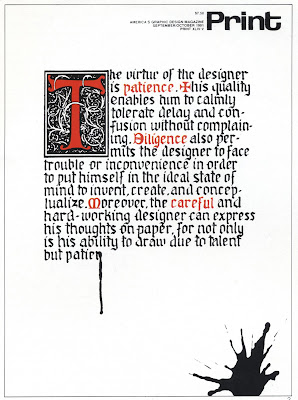INK AND COMMITMENT

Sophie Herbert
You should turn to ink only when you are no longer afraid of commitment.
If you're looking for a more casual relationship, choose a pencil because I guarantee you, ink will still be there in the morning when you wake up, and she ain't leaving after breakfast.
Newer art tools, from the etch-a-sketch to its successor, the WACOM tablet, sometimes give us the impression we can make all our mistakes disappear.

The Etchasketchist
Photoshop enables us to retrace our steps and magically wipe our fingerprints off a murder weapon or retrieve the phone number we imprudently handed out in that bar last night. But the benefits of this freedom come with a cost.
Ink is the medium for artists who are prepared to stand by their actions. Ink reserves her special favors-- as well as her frustrations-- for those artists who understand the significance of commitment.
Ink is applied wet but leaves a fossil record of every decision or mistake the artist made. That record can be difficult to live with, but its finality transforms the psychology of the experience; artists who enjoy playing with the wetness of ink recognize they can't escape the consequences of their actions when that ink dries.

Saul Steinberg had just one chance to get this bold flourish right. This Hineni moment was important to the character of the art.

Andre Francois
Ink can be experienced by means of a rigid pen or a yielding brush (offering the artist yin or yang alternatives). Some people prefer the metal backbone and sharp point of a pen nib because it offers precision and control. For this I cannot blame them. But personally, I find the nonvertebrate brush provides the strength to make the more powerful statement. The point on a brush bends to the resistance of the paper but the more it bends, the stronger and bolder its mark becomes.

Note the virilty of that lapel stroke by the great Leonard Starr
Which leads me to the point of this post: When Francis Bacon laid out the scientific method for understanding the physical universe, his great insight was that the only way to master nature is to obey her. Only by observing nature's properties and following her laws can you then command her to do your bidding. On the strength of this perception, humans launched the scientific revolution, patiently collecting the information to harness the physical world.
This rule applies equally to the hydrology of ink. Once you have learned to understand and respect her properties, ink can perform magnificent feats for you.
She is likely to serve you better through the fluid freedom of the brush than through the pen which constrains her nature. (This law also applies to other physical sciences, such as love.)
Some fools believe they can have it both ways, getting the benefits of the medium without having to deal with all of her messy capriciousness, simply by caging her in a rapidograph and regulating her through a 000 nib. But this is not mastering ink. Such people are emotional misers. They don't understand ink, and never will.


